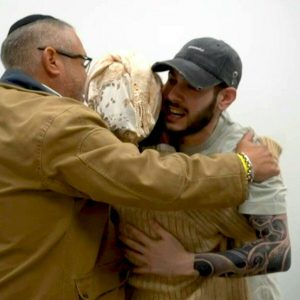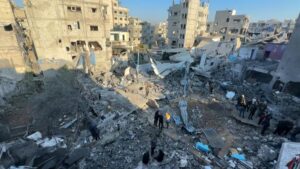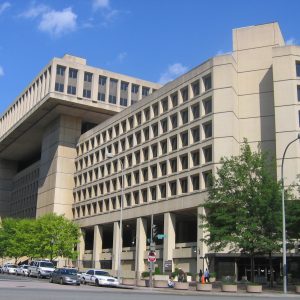Rape as a Weapon and Hindu Nationalism
-A common feature of all Hindutva attacks in India is that the accused of gang rape are never punished, and in the absence of punitive measures, these incidents are repeated from one anti-minority attack to another.
By Iftikhar Gilani
The viral video of two naked Christian tribal women paraded and gang-raped in India’s troubled northeastern state of Manipur has caused shocks around the world. Prime Minister Narendra Modi also said the video was a shock and disgrace to all of India. The incident occurred in May when ethnic unrest broke out between the region’s Hindu-majority Meiti and Kuki tribes.
The Meiti, who are majority Hindu, make up about 53% of Manipur’s population and live mainly in the Imphal Valley. The Naga and Kuki Christian tribes, who make up 40% of the population, live mainly in the mountainous districts bordering Myanmar. The state is ruled by Hindu nationalist Bhartiya Janata Party (BJP).
Since the Internet was banned in the region, these incidents remained hidden from the eyes of the world. Surprisingly, the police took up a case in June but only took action when the video went viral on social media a week ago. Initially, they investigated the person who posted the video online and did not search for the accused. But after intense pressure, the accused were arrested.
The video clearly shows a mob constantly abusing helpless women who are crying and begging for mercy. When a 19-year-old boy, the brother of one of the victims, tried to save his sister, he was lynched to death.
Eyewitnesses quoted by local media reported that the attacking crowd had several automatic rifles. They looted most of the houses and set them on fire. A team of police arrived at the scene and brought some people to safety in their car. But when the Meiti attackers surrounded the van, they handed those people over to the mob.
Several such videos have since surfaced on social media. David Thak, a waiter who worked in a Mumbai hotel, had come home for a vacation. He was found dead on a road. According to media reports, Hindu extremists had attacked his village. Thak was first shot, then his body was cut open and his eye gouged out. His severed head was displayed as a war trophy on a bamboo cane. A 45-year-old mother of two was burned alive on May 7, according to a priest in the village. Most victims say police sided with the attackers in the attacks.
Similarly, two women from a village in Kang Pokpi district were stripped and raped by the mob. The perpetrators dragged the women and held them in a closed room for about two hours. When the room was opened, both were covered in blood. They had presumably died as a result of the sexual abuse. Subsequently, on May 15, an 18-year-old woman was abducted by a mob in an area of the capital Imphal.
-Humiliation of women is common in all Hindu nationalist attacks
Mass humiliation and violence against women during anti-minority attacks are commonplace in India. Megha Kumar, a researcher at Oxford University, in her study on the link between anti-minority pogroms and sexual violence, found that at least 150 to 200 women were subjected to sexual violence in the western state of Gujarat in 2002.
Painfully, however, apart from the Bilqis Bano case, hardly any accused have been convicted in cases of gang rape during anti-Muslim attacks in the last seven decades.
Seven members of Bilqis Bano’s family were killed in front of her during the 2002 Gujarat massacre when Modi was chief minister of the state. In 2008, a Mumbai court sentenced 11 to life imprisonment, which was upheld by the High Court.
But last year, the BJP-RSS regime ordered their release using special powers. Strange interpretations were made in the process. Apart from their good behavior in prison, it was also said that these defendants were upper-caste Brahmins and therefore deserved favoritism.
-Hashmi testimonies on the Gujarat massacre
In light of the shameful incidents in Manipur, social worker Shabnam Hashmi recalls similar incidents during the Gujarat massacre.
Hashmi, who heads the NGO Act Now for Harmony and Democracy (ANHAD), has worked in Gujarat for several decades.
She has documented the shocking and harrowing stories of survivors of gang rape during the 2002 massacre.
At Kalol camp in Panchmahal district, she met a 12-year-old girl whose genitals had been mutilated. After she was raped, the crowd inserted a flagpole into her vagina. On the other side of the pole fluttered the triangular saffron flag of the Hindu Sanatandharma.
On February 28, 2002, when their village Lakhmea was attacked, three Muslim families in the village went to Pandu village in search of safety to seek refuge with their relatives. However, on the way there, they were attacked and beaten up by a mob of about 150 people. Women were stripped and told to run naked.
Helpless naked women and children ran, and behind them was a laughing and drumming crowd. Countless thugs raped every girl and woman. After doing their sacred duty and putting the flag in the vagina of the women, some of them brought gasoline and firewood and burned the victims.
The girl who told Hashmi this story said she could identify these men. They were from the nearby villages of Jantral. Still, no one was arrested. Out of 65 deaths in Kalol Taluka, 42 were reported missing, including these six rape victims.
Each of the women she interviewed testified that she saw 10-12 other women also being gang-raped.
A resident of Ballia Road testified that there was tension near her village bus stop and some motorcycles and bicycles were set on fire. She was cooking and feeding her son at her brother-in-law’s house when a mob surrounded her house and set it on fire. They broke down the door and forced their way into the house. After looting, they doused all the occupants, including 15 children, with gasoline.
Some women tried to escape through the back door but were caught and stripped.
“My brother-in-law tried to save me because we were raped, but he was killed in front of us along with another man. Three men raped me. It was like a gangbang,” the woman told Hashmi.
After they regained consciousness, they asked for clothes in the neighborhood, but no one let them into their houses. Then we ran to the fields and tried to hide their bodies in the rags they could find. On the way, they spotted a police car. But instead of helping them, they were told to run away.
In this incident, 28 women, including 10 unmarried ones, were gang-raped.
-Chilling story of eight-year-old boy
Similarly, in Godhra camp, an eight-year-old shy child with bright eyes told Hashmi that he was with his mother when she was tortured.
When the Hindutva extremists went on a rampage, his mother pressed a 50-rupee note into his pocket and told him to run away and spend the money if he stayed alive.
He ran away, but not too far, and hid behind a tree.
“From there I saw everything. How they attacked my mother, stripped her of all her clothes, then several men attacked her and then burned her,” the child said.
This child no longer had a family. But the last memory of his mother, the 50-rupee bill, was still in his pocket and he showed it to everyone.
Prime Minister Modi says the video from Manipur has shamed the nation. But the incidents that took place in Gujarat during his rule are probably enough to put the Mongol warriors Genghis and Halaku in the shade.
Shabnam Hashmi says that every single incident of brutality that happens in India today is part of the Gujarat model. Lynch law, land grabbing, democracy, destruction of educational and scientific institutions, control over media, increasing sexual assault on women, and attacks on freedom of expression and press are all happening in Gujarat.
-Rape and Hindu nationalism
In her thesis titled “Sexual Violence and Hindu Nationalism in Post-Independence Gujarat,” Megha Kumar writes that the founders of Hindu nationalism, Veer Savarkar and Guru Golwalkar, legitimized rape weapons against Muslim women by citing ancient scriptures.
These theorists said that the desecration of Hindu women by Muslims during their rule in the past should be repaid in the same way. Their theory is that even if Muslims ever come to power again, they will not dare to molest Hindu women as they did in the past.
Megha says that unspeakable sexual violence was perpetrated against Muslim women not only in 2002 but also during the Ahmedabad anti-Muslim massacre in 1969.
According to her research, women were also stripped naked in front of their families and children. Their breasts were cut off and their genitals were mutilated.
Referring to the testimony of Amna Bano, a Muslim woman who escaped gang rape, the Oxford researcher explains that those who abused these women were Hindus who lived in their neighborhood and with whom they spent their entire lives.
The commonality of these incidents is that none of the accused were ever punished. Had the 1969 Hindu nationalists been punished, the 1983 Nellie massacre in Assam might not have occurred, and had the Nellie accused been brought to justice, the 1984 anti-Sikh violence would not have occurred, and had those involved in them been truly and promptly punished, the 2002 Gujarat massacre would not have occurred.
Manipur is now a test case if the guilty are held accountable. The recurrence of gang rapes during anti-minority violence and conflicts can be prevented only if those convicted are severely punished and tried in a public court to set an example.
Otherwise, the incidents will not stop, and India will continue to be shamed.












